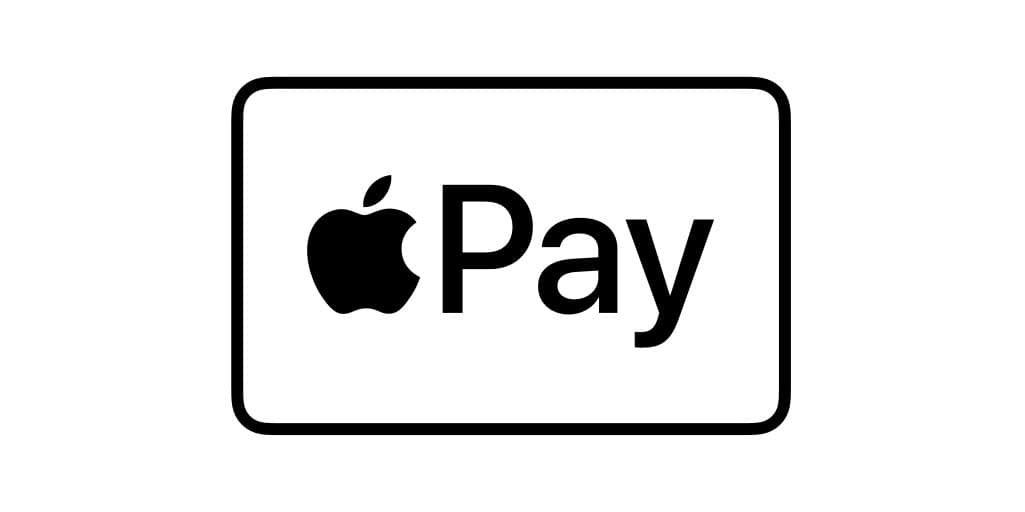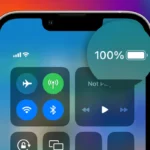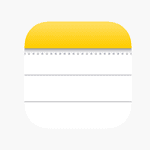Moving money between digital payment platforms has become easier than ever. Apple Pay and Cash App are two popular services that many people use for their everyday transactions, but what if you need to transfer funds from one to the other? To transfer money from Apple Pay to Cash App, you’ll need to first move your Apple Pay balance to your linked bank account, then transfer those funds from your bank to your Cash App account.
The process takes a few simple steps but requires a bank account as an intermediary. Start by opening your Wallet app, selecting your Apple Cash card, and tapping “Transfer to Bank.” Enter the amount you want to transfer, confirm the transaction, and wait for the money to reach your bank account. Once the funds are in your bank, open Cash App, tap the Banking tab, and select “Add Cash” to move the money into your Cash App balance.
While the transfer isn’t direct, this two-step process ensures your money moves safely between the platforms. The transfer to your bank typically processes within 1-3 business days for standard transfers, though instant transfers are available for a small fee. This method works reliably and keeps your money secure as it moves between services.
How to Transfer Money from Apple Pay to Cash App
Here’s a simple, step-by-step guide on how to transfer money from Apple Pay to Cash App, using clear instructions anyone can follow. While there’s no direct transfer option between Apple Pay and Cash App, you can easily move your funds by using your linked bank account or debit card as a bridge.
Step 1: Transfer Funds from Apple Pay to Your Bank Account
- Open the Wallet app on your iPhone.
- Tap on your Apple Cash card.
- Tap the More button (three dots in the top-right corner).
- Select Transfer to Bank.
- Enter the amount you want to transfer.
- Tap Next.
- Choose Instant Transfer (small fee applies) or 1-3 Business Days (free).
- Select your linked debit card (for Instant Transfer) or bank account.
- Confirm with Face ID, Touch ID, or your passcode.
Once the money lands in your bank account (or debit card), you’re ready for the next step.
Step 2: Add the Same Bank or Debit Card to Cash App (if not already added)
- Open Cash App.
- Tap your profile icon in the upper-right corner.
- Scroll down and select Linked Banks or Linked Accounts.
- Tap Link Bank or Link Debit Card.
- Enter your bank account or debit card details (the same one you used with Apple Pay).
Step 3: Add Money to Cash App
- Go back to the Cash App home screen.
- Tap Add Cash.
- Enter the amount you transferred from Apple Pay to your bank account.
- Tap Add.
- Confirm the transfer.
The money you had in Apple Pay is now available in your Cash App balance.
Quick Tips
- Instant Transfers from Apple Pay to your bank debit card usually arrive within minutes but carry a small fee (typically 1.5%).
- If you use 1-3 Business Days, it’s free, but it might take longer.
- Make sure your debit card is linked to both Apple Pay and Cash App for the fastest process.
- Double-check that your bank account or debit card is eligible for Instant Transfers. Not all cards are.
Can You Link Apple Pay Directly to Cash App?
Not exactly. Cash App doesn’t let you link Apple Pay as a payment source, but you can use your Cash App Card (if you have one) with Apple Pay. This only works for sending and receiving via Apple Pay, not for direct transfers.
Key Takeaways
- Apple Pay to Cash App transfers require using a bank account as an intermediary connection point.
- The complete transfer process typically takes 1-3 business days using standard transfer options.
- Both platforms offer instant transfer options for a fee if you need immediate access to your funds.
Understanding Apple Pay and Cash App
While there’s no direct “Send Money from Apple Pay to Cash App” button, this process is straightforward once you move the money through your bank account or debit card. It’s a handy workaround to transfer your funds quickly and safely.
Apple Pay and Cash App are two popular mobile payment platforms that offer digital wallet services for sending, receiving, and storing money. While they function separately, users often need to move funds between these services.
What Is Apple Pay?
Apple Pay is Apple’s digital wallet and mobile payment service that lets users make payments using their Apple devices. The service works with iPhone, iPad, Apple Watch, and Mac, making it convenient for in-store purchases, online shopping, and peer-to-peer transfers through Apple Cash.
Apple Pay stores payment information securely using encryption and tokenization. When a user makes a purchase, the system uses a device-specific number and unique transaction code rather than sharing the actual card details.
The Apple Cash feature within Apple Pay allows users to send and receive money through Messages or Siri. Users can transfer Apple Cash balances to their bank accounts, typically within 1-3 business days for standard transfers or within 30 minutes for instant transfers (with a small fee).
What Is Cash App?
Cash App is a mobile payment service developed by Block, Inc. (formerly Square) that allows users to transfer money to others, invest in stocks, and buy Bitcoin. The platform offers a simple interface for sending and receiving money using just a username (known as a $Cashtag).
Cash App provides users with a free debit card called the Cash Card that links directly to their Cash App balance. This allows spending from the Cash App account without first transferring money to a bank account.
Users can add money to Cash App from debit cards, credit cards, or bank accounts. The service also offers direct deposit capability, enabling users to receive paychecks or tax refunds directly in their Cash App account.
Cash App includes additional features like Boost rewards, which provide instant discounts at selected merchants, and the ability to buy fractional shares of stocks and Bitcoin.
Prerequisites for Transferring Money
Before you can move money between Apple Pay and Cash App, you need to properly set up both services and have the right accounts in place. The process requires verified accounts and linked payment methods to ensure secure transfers.
Setting Up Apple Pay
To use Apple Pay, you need an iPhone 6 or later, or an Apple Watch paired with an iPhone 5 or later. Begin by opening the Wallet app on your iPhone.
Tap the plus sign in the upper right corner to add a card. You can add credit cards, debit cards, or set up Apple Cash.
For transfers to Cash App, setting up Apple Cash is essential. This digital card lives in your Apple Wallet and allows you to send, receive, and request money.
Verify your card information when prompted. Apple may require a verification code sent to your phone or email to confirm your identity.
Once verified, your Apple Pay is ready to use. The setup process typically takes less than 5 minutes to complete.
Verifying Your Identity on Cash App
Download Cash App from the App Store and create an account using your phone number or email address. You’ll receive a confirmation code to verify your contact information.
Link a debit card to your Cash App account. This step is mandatory for transferring money between services.
Cash App requires identity verification for sending more than $250 per week or receiving more than $1,000 per month. To verify, tap the profile icon and select “Personal.”
Provide your full name, date of birth, and last four digits of your SSN. For higher transaction limits, you may need to provide your full SSN and a photo ID.
Cash App will review your information, typically providing verification within 24-48 hours. This verification protects your account and enables full functionality.
Linking a Bank Account to Both Services
For Apple Pay, open the Wallet app and select your Apple Cash card. Tap “Set Up Apple Cash” if you haven’t already, then “Bank Account” to link your existing account.
Enter your bank’s routing and account numbers. Alternatively, you can use a debit card that’s already in your Wallet for transfers.
For Cash App, tap the Banking tab (the building icon) on the home screen, then select “Link Bank.” You can manually enter your account details or sign in through your bank’s secure portal.
Verify the connection by confirming small test deposits to your account. This may take 1-3 business days.
Once both services are linked to the same bank account, you’ve created an indirect bridge between Apple Pay and Cash App. This connection allows for smoother transfers between the platforms.
Transfer Process Overview
Transferring money from Apple Pay to Cash App requires an indirect approach since direct transfers are not possible. The process involves moving funds from Apple Pay to a bank account first, then transferring that money to Cash App.
Transfer Options Available
There are two main paths for moving money from Apple Pay to Cash App. The first option involves using Apple Cash as an intermediary. Users can transfer funds from Apple Pay to their Apple Cash card in the Wallet app, then withdraw those funds to a linked bank account.
To do this, open the Wallet app, tap on the Apple Cash card, select “Transfer to Bank,” enter the desired amount, and follow the prompts. Once the money reaches your bank account, you can add it to Cash App.
The second option is transferring directly from a debit or credit card linked to Apple Pay to your bank account, bypassing Apple Cash. This works if you’ve set up your payment methods in both apps with the same bank account.
Understanding Transfer Speed
Transfer speed varies depending on the method chosen. Standard transfers from Apple Cash to a bank account typically take 1-3 business days and are free of charge. This is ideal for non-urgent transfers where timing isn’t critical.
Instant transfers from Apple Cash to a linked debit card usually complete within 30 minutes but incur a fee (typically 1.5% of the transfer amount, with a minimum fee of $0.25). The maximum instant transfer amount is $10,000.
Once money reaches your bank account, transferring to Cash App also follows similar timeframes: standard transfers take 1-3 business days, while instant deposits to Cash App are available immediately for an additional fee.
Transfer speeds may be affected by bank processing times, especially during weekends or holidays.
Terms of Use and Limitations
Several limitations apply when transferring money between these platforms. Apple Pay transfers require verification of your identity before processing larger amounts. Daily and transaction limits may apply based on your account status and history.
Apple Cash requires a minimum transfer amount of $1, while the maximum single transfer limit is $10,000. The maximum weekly transfer limit is $20,000.
Cash App also imposes its own limits. Unverified accounts can only send up to $250 within a 7-day period and receive up to $1,000 within a 30-day period. Verified accounts have higher limits.
Fees should be considered when planning transfers. While standard transfers are typically free, instant transfers incur fees on both platforms. International transfers may have additional restrictions or may not be supported.
Step-By-Step Guide to Transfer Money
Since Apple Pay and Cash App don’t offer direct transfers, users need to follow a multi-step process that involves using a bank account as an intermediary. The following guide breaks down the process into manageable steps.
From Apple Pay to Apple Cash
To begin the transfer process, users first need to move their funds from Apple Pay to Apple Cash. This requires having both services properly set up on an iOS device.
- Open the Apple Wallet app on an iPhone or iPad
- Select the Apple Cash card from the available payment methods
- Tap on the three dots (more options) in the upper right corner
- Choose “Transfer to Bank” from the menu options
Users must have verified their identity before transferring money. The verification process requires providing personal information including full name, date of birth, and the last four digits of their Social Security Number.
For small transfers under $10, the process typically completes in minutes. Larger amounts may take 1-3 business days using standard transfers, while instant transfers (with a 1.5% fee) deliver funds within 30 minutes.
From Apple Cash to Linked Bank Account
After moving funds to Apple Cash, the next step is transferring that money to a bank account that will serve as the bridge between Apple Pay and Cash App.
- In the Apple Cash card section, enter the amount to transfer
- Tap “Next” to proceed
- Select transfer speed – either “1-3 Business Days” (free) or “Instant Transfer” (1.5% fee)
- Confirm with Face ID, Touch ID, or passcode
Users must have a bank account already linked to their Apple Cash. To add a new account, tap “Add Bank Account” during the transfer process and provide the routing and account numbers.
The bank account must be a checking or savings account based in the United States. Most major banks and many credit unions are compatible with this transfer process.
From Bank Account to Cash App
Once the money arrives in the bank account, users can proceed to move it to Cash App by adding funds to their Cash App balance.
- Open the Cash App on a mobile device
- Tap the Banking tab (looks like a bank building icon)
- Select “Add Cash” from the menu
- Enter the desired transfer amount
- Tap “Add” to proceed
- Authenticate with PIN, Touch ID, or Face ID
Cash App may impose certain limits for standard accounts. Unverified accounts can only add up to $1,000 per 30 days. Verified accounts have higher limits, allowing transfers of up to $7,500 per week.
The transfer from a bank account to Cash App typically processes immediately, but might take up to 3 business days depending on the bank’s processing times.
Confirming the Transfer on Cash App
The final step involves verifying that the money has successfully transferred to the Cash App account and is available for use.
- Check the Cash App home screen for updated balance
- Review the activity tab to see the recent deposit
- Look for confirmation notification from Cash App
If the transfer doesn’t appear immediately, users shouldn’t panic. Bank transfers sometimes take time to process even when everything is working correctly. Users can refresh the app by pulling down on the main screen.
For any issues with the transfer, Cash App offers support through the app. Tap the profile icon, select “Support,” and follow the prompts to report transfer problems. Having the transaction details ready will help resolve issues faster.
Troubleshooting Common Transfer Issues
When transferring money from Apple Pay to Cash App, users may encounter several technical difficulties that can interrupt or delay the transfer process. These issues typically fall into three main categories that require specific solutions.
Transfers Not Completing
If your transfer from Apple Pay to Cash App isn’t completing, first check your internet connection. Unstable connections often cause transfer failures. Simply reconnect to a stronger Wi-Fi network or switch to cellular data.
Verify that both your Apple Pay and Cash App accounts are properly set up and verified. Incomplete verification can block transfers between services. For Apple Pay, ensure your identity verification is complete in the Wallet app. For Cash App, check that you’ve verified your account with your personal information.
App updates matter. Outdated versions of either app can cause compatibility issues. Visit the App Store to update both applications to their latest versions.
Sometimes, bank restrictions may block transfers. Contact your bank to ensure they haven’t placed holds on digital wallet transactions. Banks occasionally flag these transfers as suspicious activity.
Delays in Transfer
Standard transfers from Apple Pay to a bank account linked to Cash App typically take 1-3 business days to complete. Don’t panic if your money doesn’t appear instantly.
For faster transfers, both platforms offer instant transfer options for a fee. Apple Pay charges 1.5% of the transfer amount for instant transfers to debit cards, while Cash App charges similar fees for expedited transfers.
Server issues can cause delays. Check Apple’s System Status page or Cash App’s social media accounts for any reported outages or maintenance notices.
Transaction limits may also affect transfer timing. Apple Pay has daily and transaction limits that vary based on your account history. Cash App also imposes limits on unverified accounts. Verify your Cash App identity to increase these limits.
Incorrect Transfer Amounts
If you notice incorrect amounts arriving in your Cash App after transferring from Apple Pay, check for transfer fees. Instant transfers from Apple Pay incur a 1.5% fee that reduces the final amount received.
Document every transfer with screenshots showing the transfer amount, date, and confirmation numbers. This evidence helps when contacting customer support to dispute discrepancies.
Multiple pending transactions can sometimes cause confusion about available balances. Check your transaction history in both Apple Pay and Cash App to identify any pending transfers that haven’t settled.
For recurring discrepancies, try transferring to your bank account first, then moving funds to Cash App. This extra step can help isolate where the amount discrepancy is occurring.
Ensuring Security and Privacy
When transferring money between Apple Pay and Cash App, security measures are essential to protect sensitive financial information. These platforms incorporate multiple safeguards to ensure transactions remain secure while maintaining user privacy.
Using Touch ID and Face ID
Apple Pay integrates biometric authentication through Touch ID and Face ID to verify transactions. Users must authenticate with their fingerprint or facial recognition before completing any transfer. This prevents unauthorized access even if the device is lost or stolen.
Cash App also supports biometric authentication on compatible devices. When linking Cash App to Apple Pay, users can enable this feature in the app’s security settings.
For maximum security, users should:
- Enable biometric authentication on both apps
- Never share authentication credentials
- Set up device passcodes as an additional layer of protection
- Update both apps regularly to ensure security patches are installed
Biometric authentication significantly reduces the risk of fraud compared to traditional password systems.
Monitoring Transaction History
Regular monitoring of transaction history helps detect unauthorized activity quickly. Both Apple Pay and Cash App provide detailed transaction logs that users should review frequently.
Apple Pay users can check their transaction history in the Wallet app. The history shows all transfers, including those to bank accounts that will eventually go to Cash App.
Cash App displays a comprehensive record of incoming and outgoing transfers. The app sends notifications for each transaction, alerting users to any suspicious activity.
Setting up alerts is highly recommended:
- Enable push notifications for all transactions
- Set up email notifications as a backup
- Configure low balance alerts to prevent overdrafts
These monitoring practices help identify potential security breaches before significant damage occurs.
Protecting Account Information
Safeguarding account information is crucial when transferring money between platforms. Users should take several precautions to protect their data.
First, avoid using public Wi-Fi networks when making transfers. These networks are vulnerable to interception by hackers. Instead, use cellular data or secure private networks.
Second, regularly update passwords for both Apple ID and Cash App accounts. Strong passwords should contain a mix of letters, numbers, and special characters.
Third, enable two-factor authentication (2FA) on both accounts. This adds an extra verification step beyond the password.
Additional protection measures include:
- Never sharing account details with others
- Logging out after completing transactions on shared devices
- Regularly checking for suspicious login attempts
- Being cautious about phishing attempts requesting account information
Following these practices ensures personal and financial information remains protected during transfers between Apple Pay and Cash App.
Alternatives for Money Transfer
When direct transfers between Apple Pay and Cash App aren’t possible, several reliable alternatives exist that can help move money between these platforms efficiently.
Using Other P2P Services
Venmo offers a convenient bridge between Apple Pay and Cash App. Users can transfer funds from Apple Pay to their bank account first, then move that money to Venmo, and finally send it to Cash App. This multi-step process typically takes 1-3 business days for standard transfers.
PayPal presents another viable option. Many users already have PayPal accounts linked to their bank accounts. The process works similarly:
- Transfer from Apple Pay to bank account
- Move funds from bank to PayPal
- Send from PayPal to Cash App
Transfer times and fees:
- Standard bank transfers: 1-3 business days (usually free)
- Instant transfers: 30 minutes (1-1.5% fee typically applies)
Zelle, integrated with many banking apps, provides another alternative with typically no fees and same-day transfers when both services link to the same bank account.
Understanding the Use of Bitcoin
Bitcoin offers a unique alternative for transferring value between payment platforms. Both Cash App and other cryptocurrency wallets support Bitcoin transactions, creating a digital bridge between services.
The process involves:
- Withdrawing funds from Apple Pay to a bank account
- Purchasing Bitcoin on Cash App
- Sending Bitcoin to the recipient’s wallet
Benefits of using Bitcoin:
- Transactions typically complete within 10-60 minutes
- Works across international boundaries
- Provides an alternative when traditional banking options face limitations
Bitcoin transfers do include network fees and potential value fluctuation during the transfer period. Cash App simplifies the process by combining banking and Bitcoin functionality in one application.
For small transfers, the volatility risk is minimal, especially if completed quickly. Cash App allows users to buy as little as $1 of Bitcoin, making this option accessible even for small transfers.
Considering International Transfer Services
Wise (formerly TransferWise) specializes in international money movement with competitive exchange rates. For users needing to transfer between Apple Pay and Cash App across borders, Wise offers a cost-effective solution.
The service works by:
- Transferring from Apple Pay to a linked bank account
- Sending money through Wise to another bank account
- Moving funds from that bank account to Cash App
Key advantages:
- Up to 8x cheaper than traditional banks for international transfers
- Transparent fee structure
- Support for 50+ currencies
Western Union and MoneyGram provide alternative options with cash pickup locations worldwide. These services work well for recipients without bank accounts or in regions with limited banking infrastructure.
Mobile payment platforms like Remitly offer specialized services for specific country corridors with competitive rates for regular users.
Benefits and Downsides
Transferring money between Apple Pay and Cash App offers several advantages, but users should be aware of certain limitations and fees. Understanding these factors helps make informed decisions about when and how to move funds between these popular payment platforms.
Advantages of Using Apple Pay and Cash App
Convenience: Both platforms offer user-friendly interfaces that make sending and receiving money quick and simple. Apple Pay provides seamless integration with iOS devices, while Cash App works across both iOS and Android.
Quick Transfers: When transferring from Apple Cash to a bank account and then to Cash App, standard transfers typically process within 1-3 business days at no cost. For users needing faster access to funds, instant transfers can complete in as little as 30 minutes.
Security Features: Both services utilize encryption and fraud monitoring to protect users’ financial information. Apple Pay includes biometric authentication through Face ID or Touch ID, adding an extra layer of security.
Multiple Funding Sources: Users can fund transfers using existing Apple Cash balances, linked debit cards, or bank accounts, providing flexibility in managing finances.
Potential Drawbacks and Fees
No Direct Transfer Option: There is no direct way to move money from Apple Pay to Cash App. Users must first transfer funds to a linked bank account or debit card, then initiate a separate transfer to Cash App.
Fee Structure: Instant transfers from Apple Cash incur a 1.5% fee (minimum $0.25, maximum $15). Similarly, Cash App charges a 1.5% fee for instant deposits to a linked debit card.
Transfer Limits: Apple Pay has daily and per-transaction limits that may restrict large transfers. New Cash App users face lower limits until they verify their identity.
Processing Times: Standard transfers, while free, can take 1-3 business days to complete, which may be inconvenient for urgent transactions.
Bank Dependency: The transfer process relies on having a linked bank account or debit card, creating potential complications for unbanked users.
Finalizing Transfers and Next Steps
Completing money transfers between Apple Pay and Cash App requires attention to confirmation messages and proper documentation. These final stages ensure your funds arrive safely while preparing for smoother transactions in the future.
Confirmation and Receipts
After initiating a transfer from Apple Pay to Cash App, users should always verify that the transaction has been completed successfully. Apple Pay typically sends a notification when funds leave the account, displaying the amount and time of transfer. This confirmation appears in the Wallet app transaction history.
Users should save these digital receipts by taking screenshots or noting the transaction ID numbers. These records prove invaluable if any issues arise with the transfer.
For extra security, check both your Apple Pay balance and Cash App to confirm the money has been deducted from one and added to the other. Transfer times vary – standard transfers may take 1-3 business days, while instant transfers typically complete within 30 minutes (with associated fees).
Adding Cash to Your Apple Pay or Cash App
Maintaining sufficient funds in both accounts ensures seamless transfers. To add money to Apple Pay, open the Wallet app and tap on your Apple Cash card. Select “Add Money” and enter the desired amount.
Most banks allow direct funding through debit cards linked to your Apple Pay. The minimum deposit is typically $10, while maximum limits depend on verification status.
For Cash App, tap the Banking tab ($ icon) and select “Add Cash.” Enter your amount and confirm with your PIN or Touch/Face ID. Cash App also supports direct deposits from paychecks.
Quick Funding Options:
- Bank transfer (1-3 days)
- Debit card (instant but may have fees)
- Cash deposit at partner locations
Preparing for Future Transfers
Setting up recurring transfers can streamline the process for regular payments. Both platforms allow scheduling of transfers at specific intervals, reducing manual effort.
Keep your linked debit cards and bank information current in both apps. Outdated information causes rejected transfers and unnecessary delays. Update personal information immediately after any changes.
Consider maintaining a balance in both Apple Pay and Cash App based on your usage patterns. Heavy Cash App users might keep more funds there, while frequent Apple Pay shoppers might prioritize their Apple Cash balance.
Transfer Tips:
- Set calendar reminders for scheduled transfers
- Monitor transaction limits (daily/monthly)
- Verify recipient details before confirming
- Keep both apps updated to access new features
Frequently Asked Questions
Moving money between payment apps requires specific steps and understanding of transfer limitations. Here are answers to common questions about transferring funds from Apple Pay to Cash App.
What are the steps to move funds from Apple Pay to Cash App on an iPhone?
Since direct transfers aren’t possible, users must follow a two-step process. First, transfer money from Apple Pay to a bank account or debit card. Open the Wallet app on your iPhone and tap on the Apple Cash card.
Select the “More” button and choose “Transfer to Bank.” Enter the amount to transfer and tap “Next.” Choose either an instant transfer to a debit card or a standard transfer to a bank account.
After funds reach your bank account or card, open Cash App and tap the Banking tab. Select “Add Cash,” enter the amount, and tap “Add.” This completes the transfer process.
Can you transfer money from Apple Pay to Cash App without using a card?
No, transferring money from Apple Pay to Cash App requires an intermediary method. The transfer must go through either a bank account or a debit card.
Apple Pay doesn’t allow direct transfers to other payment platforms like Cash App. The only way is to first withdraw funds to a bank account linked to both services, then move the money to Cash App.
What is the duration for funds to reflect in Cash App when transferred from Apple Pay?
The total transfer time depends on the methods used. Instant transfers from Apple Pay to a debit card typically complete within 30 minutes but include a small fee.
Standard transfers from Apple Pay to a bank account are free but take 1-3 business days. Once the money reaches your bank or card, transfers to Cash App are usually instant.
The entire process can take anywhere from 30 minutes to 3 business days depending on the transfer methods and timing of each step.
How can one withdraw funds from Apple Pay directly to a bank account?
To withdraw funds from Apple Pay to a bank account, open the Wallet app on your iPhone. Tap on your Apple Cash card, then tap the “More” button.
Select “Transfer to Bank” and enter the amount you wish to transfer. Tap “Next” and select “1-3 Business Days” for a free standard transfer.
Confirm the transfer details and authenticate with Face ID, Touch ID, or your passcode. The money will arrive in your linked bank account within 1-3 business days.
Is it possible to send money from Apple Pay to a debit card, and if so, how?
Yes, Apple Pay allows transfers directly to a debit card. Open the Wallet app and tap on your Apple Cash card. Select the “More” button and choose “Transfer to Bank.”
Enter the transfer amount and tap “Next.” Select “Instant Transfer” to send money to your linked debit card. This option charges a 1.5% fee (minimum $0.25, maximum $15).
Confirm the details and complete authentication. The funds typically appear on your debit card within 30 minutes, making this the fastest option.
What process should be followed to transfer funds from Apple Pay to a Chime account?
To transfer money from Apple Pay to a Chime account, first ensure your Chime debit card or account is linked to Apple Pay. Open the Wallet app on your iPhone and select your Apple Cash card.
Tap “More” and select “Transfer to Bank.” Enter the amount and choose either instant transfer to your Chime debit card or standard transfer to your Chime account.
After authentication, the money will arrive in your Chime account within 30 minutes for instant transfers or 1-3 business days for standard transfers. You can then use these funds through your Chime account.







